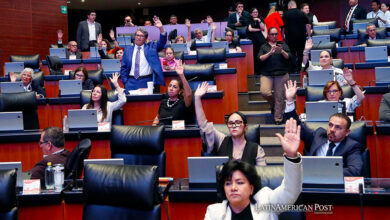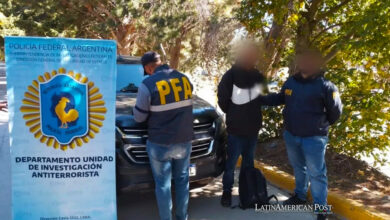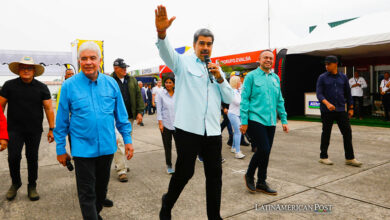Every year millions of people from all over the world apply for this program to obtain their residency in the United States.

The famous “Visa Lottery” grants the opportunity to legally enter and reside in the United States to people from all over the world. Photo: Unsplash
LatinAmerican Post | Luis Ángel Hernández Liborio
Escucha este artículo
Leer en español: Así funciona la “Lotería de visas” de Estados Unidos
Legal or illegal migration to the United States continues to be one of the main topics on its agenda, which is why the country has designed strategies to stop and control migratory flows. One of them is the famous "Visa Lottery", which grants the opportunity to legally enter and reside in the United States to people from all over the world. Due to the high number of applications, being selected is considered a real prize. Last week, the news that Venezuela was out of the program broke out in the media, what was the reason? What situation is the rest of Latin America in? This is how "the lottery" works.
The origins of the program date back to the presidency of Ronald Reagan, who created the NP-5 program with which he granted 5000 visas in 1987 and the same number in 1988, according to a 2004 report from the US Congress, this in order to increase migration from all parts of the world and ensure ethnic diversity that honors America's origin. Over time, the program grew in the number of annual visas granted and the rules were consolidated.
The program is officially called Diversity, in view of its openness to everyone, although it is popularly known as the "visa lottery." To begin with, it is not an open call to all countries in the world, but to all regions. One of the rules specifies that those countries that have less than 50,000 migrants who have arrived in the United States in the last 5 years will be eligible. This rule has been broken by the following countries: Bangladesh, Brazil, Canada, China (including Hong Kong, but excluding Taiwan and Macau), Colombia, Dominican Republic, El Salvador, Haiti, Honduras, India, Jamaica, Mexico, Nigeria, Pakistan, the Philippines, South Korea, the United Kingdom (with the exception of Northern Ireland), Venezuela and Vietnam, who are excluded for the current call for the fiscal year 2023, according to information from the State Department.
Despite the political situation in Venezuela, the exclusion of the program addresses the numbers in migration. However, in the past, there have been cases in which political situations influence the inclusion or exclusion of countries. For example, during the Trump administration, the issuance of visas was stopped with Proclamation 10014 on the pretext of protecting the US economy hit by the pandemic, a restriction that Joe Biden removed in February this year.
In the same way, it is important to underline the reason for the many locks, those selected in the draw are not guaranteed a "Green card" but rather the opportunity to request one of the 55,000 that are "offered", an important difference. However, those who manage to obtain it will have the right to reside and work permanently in the United States, request other members of their family to legally reside in the United States, protection of the law on an equal basis with U.S. citizens, and most importantly: the possibility of obtaining citizenship by fulfilling the established requirements.
You can also read: The Haitian Migration Crisis Will Impact Latin America
How does it apply to the Diversity program?
In the call for the fiscal year 2023 (the next to be delivered) the Department of State, the institution in charge of the program, specifies the eligible countries and the requirements. Eligible Latin American countries are Argentina, Bolivia, Chile, Costa Rica, Cuba, Ecuador, Guatemala, Nicaragua, Panama, Paraguay, Peru, and Uruguay. To apply to the program, you must fill out the E-DV Entry Form online, on this page. It is important to fill it out carefully, remember that millions of people participate in the draw, minimal errors could leave your application out. The form will ask for basic information (name, age, gender, address, passport, telephone, marital status, etc.), information on work experience (minimum of two years and an eligible sector in the program), and your level of education that must be a minimum of upper secondary education ( high school or its equivalent). In addition to demonstrating having sufficient resources to settle in the United States.
The application has no cost, so it is very important to be careful to apply directly on the State Department page, nowhere else should you enter information and less if it has any cost. The government recommends not using managers to fill out the form, because it is an action that lends itself to extortion and/or theft of information, among other problems. The application period this year will be from October 6 to November 9, you have to be careful not to send the form twice, as that would disqualify you. At the end of the form, the system will generate a confirmation number that you must keep to verify from May 8, 2022, if you were selected. Remember that the State Department does not notify those selected (or those not selected) in any way, they must directly review the site.




